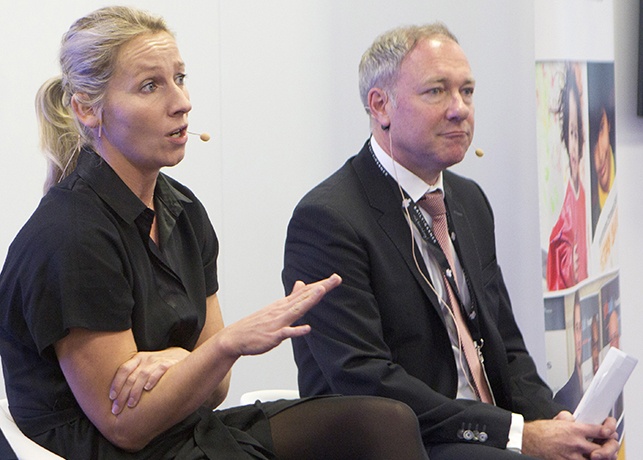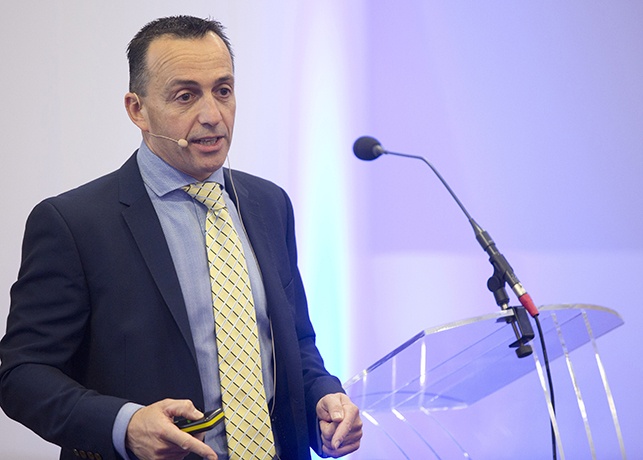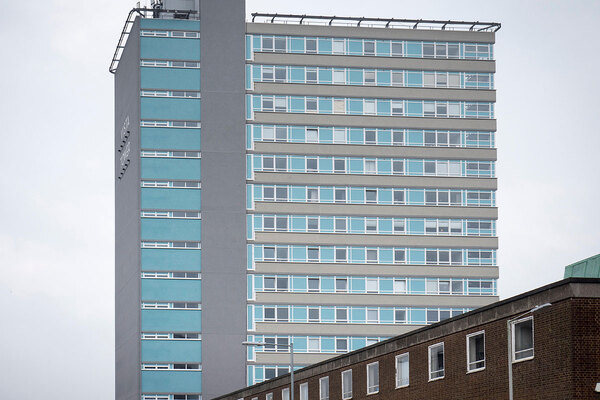All change
How can landlords best manage their housing stock to meet the needs of their tenants and business? Inside Housing reports

Charlotte Semp, Notting Hill Housing, and Andy Tookey, Baily Garner
In association with:

Housing associations have a particularly difficult job on their hands. They have to find a way to maintain and deliver more affordable homes in the midst of major upheavals: annual social housing rent reductions, cuts to grant funding, welfare reform, rising fuel poverty and the extension of the Right to Buy.
Inside Housing and Durkan hosted a breakfast briefing at the Homes 2016 conference in London to discuss how to best manage social housing stock in such uncertain and rapidly changing times.
Dick Mortimer, director of development and sales at Family Mosaic, has been exploring this very question in his role as chair of the Housing Forum’s Working Group.
A report on the subject, titled Making the Best of Existing Housing, is due to be published on 15 December.
Future proofing
The report examines how housing associations can increase the value of their existing homes to support cost-effective repairs and, ultimately, future proof their vital work providing affordable housing.
Mr Mortimer says the sector needs to “wake up” and look afresh at its stock in order to make sure it is meeting the demands of the modern world.
“Don’t lovingly look at your stock and fall back on the fact that you’ve had it for 50 years because it probably isn’t what’s required now.”
Some properties, he insists, should be classed as “do-not-resuscitate” if there are no plans to improve them or do anything with them.
“I’ve got a car that is 11 years old - there are dents, it’s leaking and God knows what else.
“I’m in a do-not-resuscitate period. So why don’t we think like that about our housing as well?”

Daren Nathan, Durkan
Family Mosaic, for instance, sold off a string of extremely energy inefficient homes as they could not be improved to the point whereby low-income tenants could afford to live in them.
“When we are unable to bring our stock up to a certain standard because of planning constraints and the actual construction of the buildings, then we will not retain them. Energy prices are going to zoom up because of the exchange rate and they will be unaffordable for the client groups we are trying to serve,” says Mr Mortimer.
He wants housing associations not to continue “blindly” investing in old properties without thinking hard about their role in meeting today’s housing needs.
“The report explores some of these issues and what it challenges you to do is go back and look. All the technical stuff feeds into it but it has got to be a change of attitude and a change in the way you view your stock,” he says.
Charlotte Semp, director of strategy and investment at Notting Hill Housing, is “not precious about selling” but appears to have a different emphasis from Mr Mortimer: she prefers to hang on to high-value properties.
“Is disposal right, especially when talking about London-based properties where the value of that land is really high? Notting Hill doesn’t feel comfortable disposing of assets in high-value areas for the very reason it is a good asset,” she says.
Instead the association develops these expensive homes in the hope they will eventually generate more rent.
“To get them to pay their way we can do basement conversions and loft extensions, or build on garage sites or gardens,” she continues. “Our preference is to look at those alternative options rather than just dispose of something.”
Lifestyle choices
Another way social landlords can make the best of existing properties is to understand tenants’ behaviour better.
“We are trying to understand the customer more,” she says. “We want to know more about them and their lifestyle.”

Dick Mortimer, Family Mosaic
She is distrustful of stock condition surveys. In her view they are all too often based on sweeping assumptions rather than the actual lifetimes of different components within a property.
“I hate stock condition surveys. I will run around all day every day trying to get information about what those assets are doing and I don’t really use it,” she admits.
Andy Tookey, of construction consultancy Baily Garner, says most people in the sector accept that “doing nothing is not an option” if they want to future proof their business models.
“We are now in a very different world. All of you will be reviewing and revising strategic plans,” he observes.
He too is sceptical about stock surveys: “They should be telling you about the value of your components. But does it really help you realise the potential value of your assets and identify all of your liabilities and opportunities? Probably not.”
Social landlords, he suggests, should seek to find out how a property performs “operationally, financially, what its cost in use is, what its affordability is”, and, perhaps most importantly, “does it meet the organisation’s social purpose?”.
Skills shortages
Contractors are also coming to terms with a changing world. Daren Nathan, development director at Durkan, says his biggest concern at the moment is the rising cost of labour and deepening skills shortages.

The audience listens in on the discussion
“Over 10 years we are going to lose 700,000 skilled workers. And they will be replaced with 25,000 a year,” he says. “So we have 250,000 over 10 years replacing 700,000 - that doesn’t sound like it’s going to work, does it?”
But Mr Nathan is adamant that contractors and developers should aim to stretch their budgets further in order to deliver better value for money.
“‘Lagniappe’ is one of my favourite words. It is South American in origin. It is about something extra being given during a trade,” he explains. “So someone would sell a person 12 turkeys and they might give the buyer an extra turkey for good measure.”
He cites the example of Durkan’s regeneration of Coventry Cross Estate in east London, which was completed in 2012.
“We said at the start: can we improve energy efficiency for the occupiers of these buildings and yet keep it within the original contract sum? And that’s what we did.”
Rising energy prices are raised by an audience member. Councillor Mike Roberts, from Rushmoor Borough Council, asks if a perfect storm is about to engulf tenants because energy prices and inflation are rising but the benefit cap is fixed.
“How are you going to manage the assets when the people inside can’t afford them?”
Mr Mortimer insists social landlords have to learn to “churn” their stock if they can’t make existing homes affordable for tenants.
Ms Semp suggests that in the future tenants might be able to store energy in batteries and use smart technology appliances when prices are lower.
“If you’re not thinking about the energy crisis you are going to be playing catch-up,” she says. “Consumers are not going to change their behaviour overnight.”






